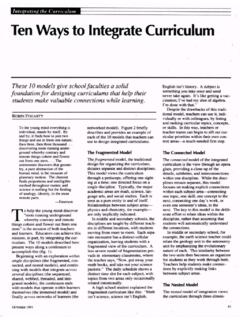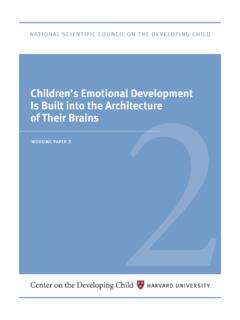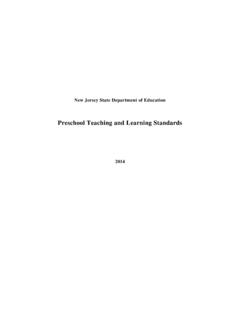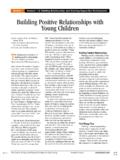Transcription of STRATEGIES FOR TEACHING WRITING - ASCD
1 STRATEGIES FORTEACHING WRITINGA bout ASCD .. viAbout the Authors .. viiAcknowledgements .. viiiRATIONALE AND PLANNINGS ection 1:Why Teach WRITING ? .. 3 Section 2:Understanding the WRITING Process .. 5 Section 3: TEACHING the WRITING Process .. 9 Section 4:Using the WRITING Process Chart .. 18 Section 5:Assessment .. 22 Section 6:How to Use the Tool Pages .. 30 WRITING PROCESS TOOLSP rewriting .. 41 Brainstorm ..45 Cluster ..55 Cue ..61 Plot ..79 Gather ..91 WRITING .. 117 Focus .. 121 Draft .. 137 Share .. 147 Titles .. 153 Revising .. 169 Leads .. 173 Organization .. 189 Question .. 215 Description .. 229 Word Choice .. 271 Conference .. 289 Editing .. 307 Self-Edit .. 311 Peer-Edit .. 325 Proofread .. 335 Publishing .. 339 Celebrate .. 341 Portfolio .. 353 Manuscript .. 359 RESOURCESM odeling Activity: As Easy as Baking Cookies .. 365 Narrative Paper: A Lesson Plan.
2 368 Glossary of Terms .. 383 WRITING PROCESS TOOLSA ctors and Actions .. 317 Adjectives for Nouns and Adverbs for Verbs .. 229 And, Or, But .. 321 Audience and Magazines .. 123 Audience Identification .. 125 Audience in Conversation .. 121 Brainstorm .. 45 Bucket .. 53 Categories .. 49 Categorizing Titles .. 157 Character Figure .. 255 Character Questioning .. 253 Character Traits .. 249 Class Book .. 361 Clich s .. 267 Cluster .. 55 Complete Sentences .. 323 Conference Circles .. 301 Conferencing with Self .. 289 Conversational Versus Written Language .. 329 Cue Alphabet .. 69 Cue Question .. 73 Cue Cluster .. 77 Cue Sense .. 61 Display .. 349 Draw .. 105 Editing Checklist .. 333 Editing Marks .. 325 Editing Purpose .. 331 Fast Write .. 137 Figurative Language Definitions .. 257 Figurative Language in Narrative .. 263 Great Beginnings with Readers Responses.
3 149 Headlines .. 161 Highlight for Plot Development .. 201 Highlight for Unity .. 197 Interview .. 97 Isand Wa sDemonstration .. 283 Just Do It! .. 145 Lead Copy Change .. 185 Lead Purposes .. 177 Lead Scenarios .. 183 Leads Application .. 187 Leads from Books .. 173 Letter to Self .. 141 Listen .. 315 Literary Reading .. 341 Narrative as a Model for WRITING .. 269 Object Description .. 243 Outline .. 189 Pair Share .. 147 Paragraph Analysis .. 203 Peer Conferencing Responsibilities .. 291 Personal Book .. 359 Plot .. 79 Proofreading Checklist .. 335 Purpose Identification .. 127 Question .. 215 Question Mobile .. 219 Questions from Peers .. 223 Questions from Self .. 227 Read .. 93 Read Aloud .. 347 Readers Story Map .. 151 Research .. 107 Revise for Punctuation .. 195 Revision Checklist .. 303 Self-Interview.
4 101 Sense Cone .. 65 Sense Word Bank .. 67 Sensory Word Bank .. 231 Sensory WRITING .. 245 Show Versus Tell .. 233 Simile Development .. 265 Skip the Beginning .. 143 Snowballs .. 51 2004. ALL RIGHTS .. 311 Spelling .. 313 Story Map .. 87 Student Reflection .. 353 Student to Student Conference Record .. 299 Substitutes for Said .. 275 Talk .. 91 Target Practice .. 133 Teacher Conference Record .. 295 Thesaurus .. 271 Think .. 95 Titles in Media .. 155 Titles from the Text .. 163 Tombstone .. 277 Topics and Purpose .. 131 Transition Illustration .. 205 Transitions Application .. 207 Vivid Titles .. 153 Voice .. 287 Weak Words Analysis .. 285 Writer and Reader Responses .. 293 WRITING Awards .. 351 RATIONALEANDPLANNINGSECTION 1 WHYTEACHWRITING?3 Students exclaim, WRITING is hard! And a teacherreplies, Yes, but it can be fun.
5 Teachers cry, TEACHING WRITING is hard! And we,the authors of this action tool, respond, Yes, but it isrewarding. Simply stated, WRITING is not easy. But thatdoesn t mean it can t be fun, rewarding, enlighten-ing, reflective, and thought is the vehicle for communication anda skill mandated in all aspects of life. Parents writenotes for their children. Doctors write technicians write work orders. Politicianswrite speeches. Grandparents write letters. Friendswrite e-mails. WRITING as communication is a dailyactivity. No matter their age, students recognize theneed to communicate in WRITING . As teachers, we arefaced with the task of helping stu-dents view WRITING as essential addition to promoting theneed for good communication skills, TEACHING WRITING provides opportunities for studentsto develop clear thinking skills. When students aregranted time to write and process their thoughts,they develop a way to analyze their thinking.
6 Throughwriting, they discover the channels of logic and thepitfalls of fallacies. They begin to rely on cognitivereasoning instead of impromptu thought. In turn, WRITING makes students responsible for their learning;they cannot sit passively in the classroom. They mustengage. The most powerful argument for TEACHING writingis that we are members of the human race, and assuch, we ve always had the innate desire to commu-nicate in WRITING . Prehistoric cave dwellers sketchedon stone walls to express their priests used hieroglyphs to record their his-tory. Moses delivered the TenCommandments on stone tabletsto the Israelites. King John signedthe Magna Carta at the hands offeudal lords. Thomas Jefferson 2004. ALL RIGHTS RESERVED. When the student is ready,the teacher will appear. CHINESE PROVERBSTRATEGIES FOR TEACHING WRITING4penned the Declaration of Independence for anew nation. Written communication is no less important inthe classroom.
7 Depicting historical reasons for writingand demonstrating how to write promotes the beliefthat teachers are models of active writers. Studentsmore readily accept risks when teachers visually com-municate their abilities to take risks. Together stu-dents and teachers share an emotional commonalitythat leads to building relationships. With a strongteacher-student connection, students welcome theopportunity to express their thoughts, feelings, andreasoning in WRITING . WRITING is a devel-opmental process thateach student can suc-cessfully experience atdifferent levels whenit s approached sys-tematically. Based onthis premise, this action tool presents the five stagesof WRITING prewriting, WRITING , revising, editing, andpublishing in a manner that allows WRITING to betaught as a process. So Why This Action Tool? STRATEGIES for TEACHING WRITING :An ASCD Action Toolmakes WRITING in the classroom manageable for boththe teacher and the students.
8 A blank sheet of papercan often pull students down into confusion, andmany refrain from writingbecause they feel unable tomake the leap from prewritingto publishing. Together, teach-ers and students must approachwriting as conquerable. The goal of this actiontool is to break the currentemphasis on merely assigning a paper and expectingstudents to jump into the WRITING and, instead, pro-vide them stepping-stones to cross that river ofuncertainty and fear without getting swept away byconfusion and despair. These tools offer activitiesthat can be directly applied to students WRITING ,providing them with skills they can use over andover again. As writers, we understand the philosophy behindthe TEACHING of WRITING but recognize the need to gobeyond philosophy to direct instruction and materi-als to teach WRITING in the classroom. Therefore, wedo not provide simple gimmicks; WRITING is not sim-ple.
9 We do, however, provide activities that, whenstrung together and connected, lead to success. Oursuggestion is to use this action tool as a whole cur-riculum and break it into individual TEACHING activi-ties. Teachers have the opportunity and responsibilityto identify activities that work for their students andto walk the students through each stage of theprocess, building on each activity until the studentsproduce a final, publishable paper. Teachers havethe responsibility to teach the STRATEGIES and thenempower students to find the process that works forthem as learners. WRITING does not have to be fearsome. It is a natu-ral part of life that is not a choice but an tool provides the means for teachers to teachwriting and provides a path for students to follow asthey progress from where they are as writers to wherethey need to be for academicand real-life survival. It lays thecourse for students to becomeproficient and advanced writ-ers.
10 It allows them to sit with afinal copy in their hand, reflecton their journey, and smile attheir accomplishments. 2004. ALL RIGHTS RESERVED. I never know what Ithink about somethinguntil I read what I vewritten on it. WILLIAMFAULKNER If you want to become a good writer,you need to do three things. Read a lot,listen well and deeply, and write a don t think too much. Just enterthe heat of words and sounds and col-ored sensations and keep your penmoving across the page. NATALIEGOLDBERGSECTION 4 USING THEWRITINGPROCESSCHART18 The WRITING Process Chart provides the foundationfor STRATEGIES for TEACHING WRITING :An ASCD ActionTool. This chart has been successfully implementedin grades 5 12 classrooms, presented at middleschool and high school teacher workshops, and mod-eled for preservice teachers. It has aided students inrural and urban communities; students in specialeducation, general education, and gifted classrooms;English language learners; and those in one-on-onetutoring.













